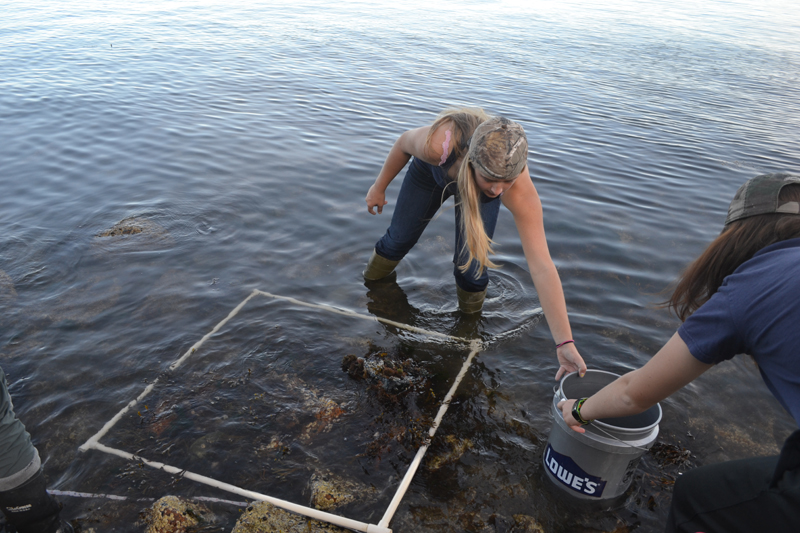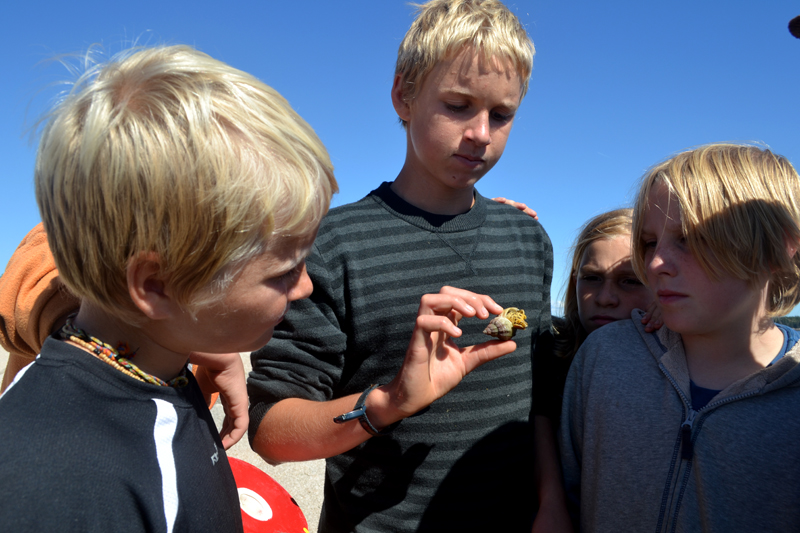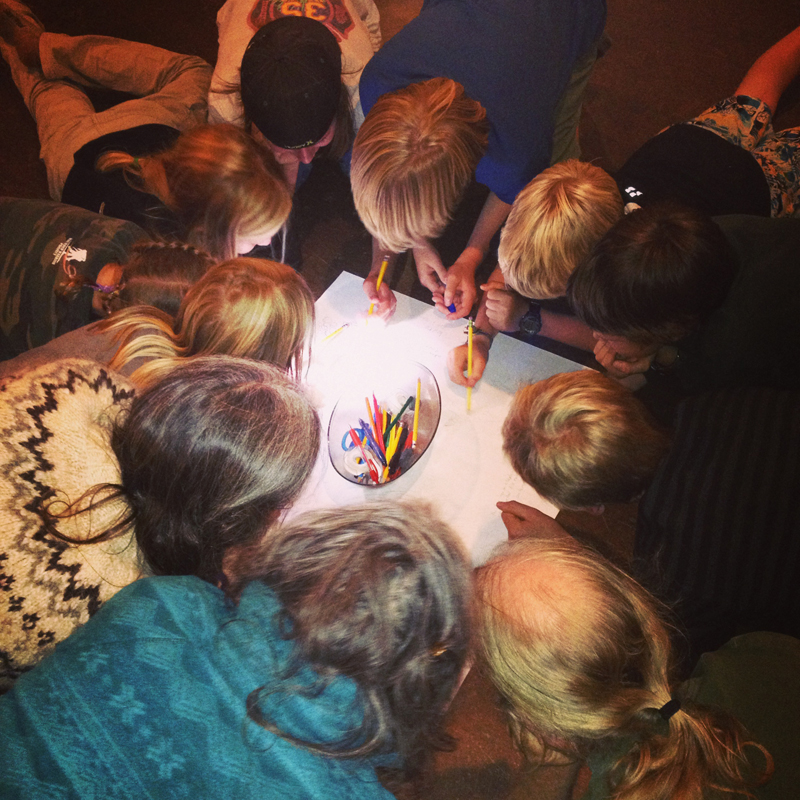Students from Vinalhaven and North Haven gathered on Hurricane in October 2013 for a two-day intensive trip as part of the Eastern Maine Skippers Program--a new curriculum thread in coastal Maine schools that is designed to make high school education more relevant for students participating in the lobster industry. This program was focused on introducing students to different ways they can do science to improve their knowledge of lobsters at the larval, juvenile, and adult stages.
Our experiments included a transect and quadrat survey of juvenile lobsters in Hurricane's low intertidal, towing for larval lobsters and other planktonic organisms with plankton nets, deploying tethering platforms with juveniles on them to study lobster predation, and finally designing, implementing, and collecting underwater footage of modifications to three of Hurricane's demonstration traps to see if we could improve the traps ability to retain legal-sized lobsters.
For this project, we collaborated with Noah Oppenheim, a graduate student who came to Hurricane earlier in 2013 to conduct research on juvenile lobster predation. This allowed students to learn about and replicate Noah's experiment, how scientists collect data, and how science and scientists fit into the grand scheme of managing the lobster fishery.
The skippers program (which also includes George Stevens Academy, Deer Isle Stonington High School, Harraguagus High School, and Mount Desert Island High School), is now in the process of designing and testing the viability of a trap fishery for winter flounder in Maine. You can read more about their project here.







